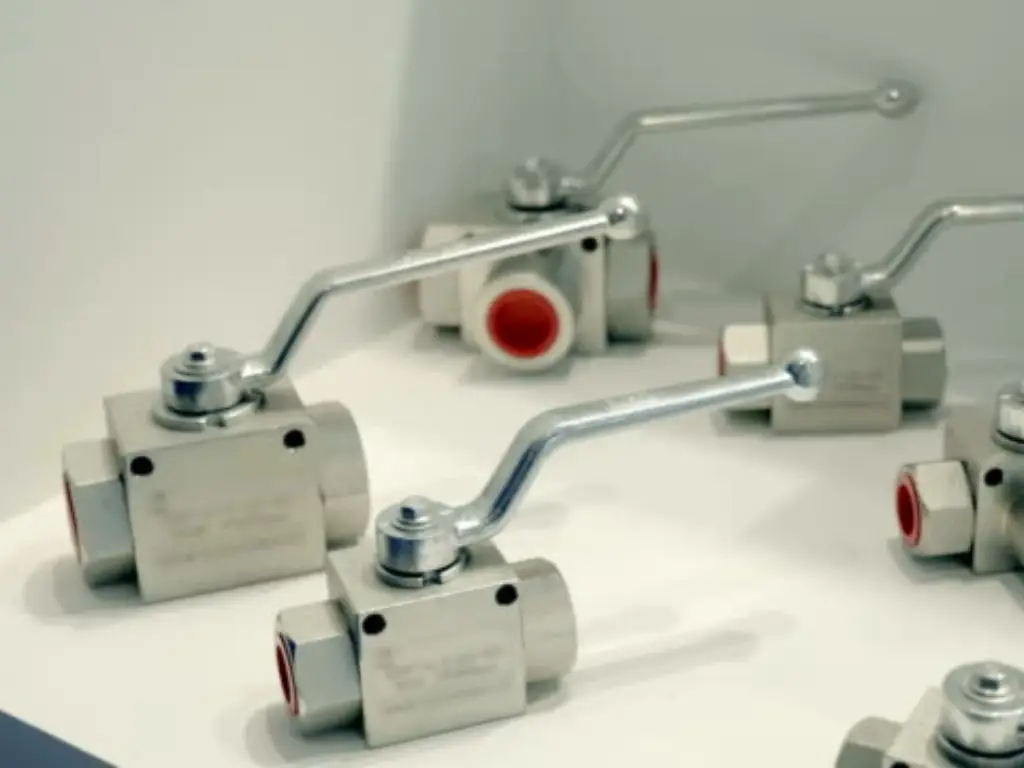
Introduction
Did you ever question yourself as to what is a ball valve used for? You are in the correct place! Ball valves have an important role to play in piping systems as they are known for their adaptability and dependability. You will find ball valves just about anywhere, from your household water supply network to complex fluid flow systems found in different industries. In this article, we shall delve deeper into knowing ball valves more including their working principles, components, and many uses that they can be applied to. Consequently, you will completely understand what a ball valve is, and why it is a very common preference among users in numerous settings.
What Is a Ball Valve and How Does It Work?
A ball valve is a kind of valve which can be used to control the flow of fluid in a piping system by having a pivoting spherical disc known as a ball. This ball has a hole through its middle. When aligned with the pipeline, it allows fluid flow. When turned perpendicular, it stops the flow. Ball valves are recognized for their durability, reliability and high tight seal levels. They have been widely employed in various places like domestic plumbing systems, industrial processing as well as sanitary applications in food industry.
The understanding of how a ball valve works entails an examination of its simple but effective mechanism. The ball inside the valve rotates about an axis that is perpendicular to the direction of flow. A turning handle or actuator on the valve stem controls this rotation. When this handle makes a quarter turn, it shifts the position of the fluid, either letting it move via bore or blocking all passage through it as well. The valve seat is resiliently made from Teflon-like materials thereby providing tight shut-off against the spherical body.
Components of a Ball Valve: An In-Depth Look
Understanding the parts of a ball valve is important in understanding how these multi-purpose devices operate. A typical ball valve comprises several key components: body, ball, seat, stem, handle and end caps. In the operation of the valve as a whole as well as for its intended function, each of these parts plays an important role.
- Body: Ball valves are made with main structure called body that contains all their internal components. It helps them withstand high pressures and makes them long lasting. Constructing the body using different materials such as stainless steel, brass or plastic depends on either what environment they will be used in or type of fluid that will pass through it. This body may take different forms like one-piece designs, two-piece designs or three-piece configurations which are more often easy to maintain than others but vary in durability.
- Ball: The ball is one of the internal parts of a ball valve responsible for controlling fluid flow rate. It has a hollow shape inside it just like that of sphere with a hole at its center also referred to as port. When open the fluid will only move through this hole because; when closed the ball’s solid part hinders any movement of fluids. Simply put, balls are mostly metallic or even hard plastics thus being capable to bear system pressure and temperature.
- Valve Seat: This seal is created by a vital element known as the valve seat that exists between the ball and the body of the valve. This tight seal ensures no fluid escapes when shut preventing any leakage through. They are normally made from soft and flexible materials such as Teflon or other polymers which give good sealing properties and can withstand erosion. The quality of valve seat considerably affects both the performance and lifespan of valves.
- Stem: The stem connects between the ball and the handle or actuator. It transfers rotational force needed for turning around the ball. The material used to make this stem should be capable of withstanding mechanical stresses during operation, pressure within a valve and also high resistance to corrosion. Many designs have a seal on their stems for better prevention of leaks, hence smooth running.
- Handle: The handle or lever moves by use of hands to control its opening or closing manually. For instance; turning it for 90 degrees leads to rotating of a ball so that it either opens or closes a valve. The design makes it easy to know whether a valve is open/closed through observing status indicated by its handle. In automated systems, an actuator may replace this handle so as to remotely control valves.
- End Caps: These are connected at both sides with pipes into which they operate connectors ensuring leak-proof connections while keeping them tight together with valves at other ends . End caps can be threaded, butt welded or flanged depending on system’s particularities. Ease of installation and maintenance largely depends on design of these final parts.
These components put together make ball valve a reliable and versatile tool for fluid flow control in different applications. By understanding the function of each part, one can have a better appreciation of the design and efficiency of ball valves.
Common Applications of Ball Valves in Various Industries
Ball valves are known for their versatility, durability, and reliability. Hence, they are extensively used in both residential areas and industries. Let us explore how these applications vary in these two environments.
Residential Applications
- Plumbing Systems: In residential plumbing, ball valves are commonly used to control the flow of water to various fixtures such as sinks, toilets, and showers. Their ability to provide a tight seal ensures there are no leaks, making them ideal for home use. Homeowners appreciate their easy visual confirmation of the valve’s open or closed position and easy operation.
- Heating Systems: Ball valves also find application in house heating systems. They help regulate the flow of water or steam to radiators or underfloor heating systems. Their rugged design allows them handle high pressure ratings that often exist in those systems, thus ensuring reliability over long periods.
- Garden Irrigation: Ball valves control the flow of water into different zones within garden irrigation systems. This is to enable homeowners to efficiently manage watering schedules so that every part of the garden receives adequate amounts of moisture. The simplicity involved with manual ball valves makes them a common choice for this purpose.
Industrial Applications
- Oil and Gas Industry: In the petroleum industry, the job of regulating crude oil as well as natural gas flow through pipelines is handled by ball valves. The fact that they can function in such tough conditions and also be under high pressure makes them an integral part of this field. Ball valves guarantee that operations are done efficiently and safely, reducing chances of leaks which would destroy the entire pipeline system. Using either full bore or reduced bore designs enables different flow rate demands to be met.
- Chemical Processing: In chemical processing plants, the flow of different chemicals is controlled by ball valves. Their materials can be selected to be resistant to corrosion, thus enhancing their longevity and safety. Ball valve’s accuracy and dependability aid in maintaining required flow rates and levels of pressure in chemical processes and reactions.
- Food and Beverage Industry: In the food and beverage industry, sanitary ball valves are utilized for handling the flow of liquids, such as water, juices and dairy products. These valves are made to meet stringent hygiene standards so as not to have any contamination. Their designs which are easy to clean and can provide a perfect tight seal make them ideal for use in food processing plants that require packaging. The use of these sanitary ball valves in such applications can also be beneficial in meeting rigorous health standards.
- Pharmaceutical Industry: Precise control of fluids in medicine manufacturing by the pharmaceutical industry depends on ball valves. The cleanliness standards that must be met for these valves are stringent to prevent contamination. They are reliable and easy to use and this makes them ideal for applications that need tight regulation of flow rates in different control applications.
- Water Treatment Plants: The flow of water through various stages of the treatment process in water purification plants is controlled by ball valves. They are responsible for regulating the inflow of raw water, managing flows through filtration systems, controlling addition of chemicals and ensuring an effective distribution of treated water. In order to maintain efficient and safe water treatment operations, they must have a capability to handle high pressures, tight sealing ability as well as prevention of undesired backflows.
A very significant function of ball valves is to control the flow of fluid at homes and in industries. The versatility and reliability of different industries make them a preferred choice because of their wide range of applications. Ball valves enable efficient and safe liquid handling by offering secure sealing and ease as well.
Types of Ball Valves: Designs and Configurations
Each individual type of ball valve has been designed to meet the specific application requirements based on its unique features and operational characteristics.
Floating Ball Valves
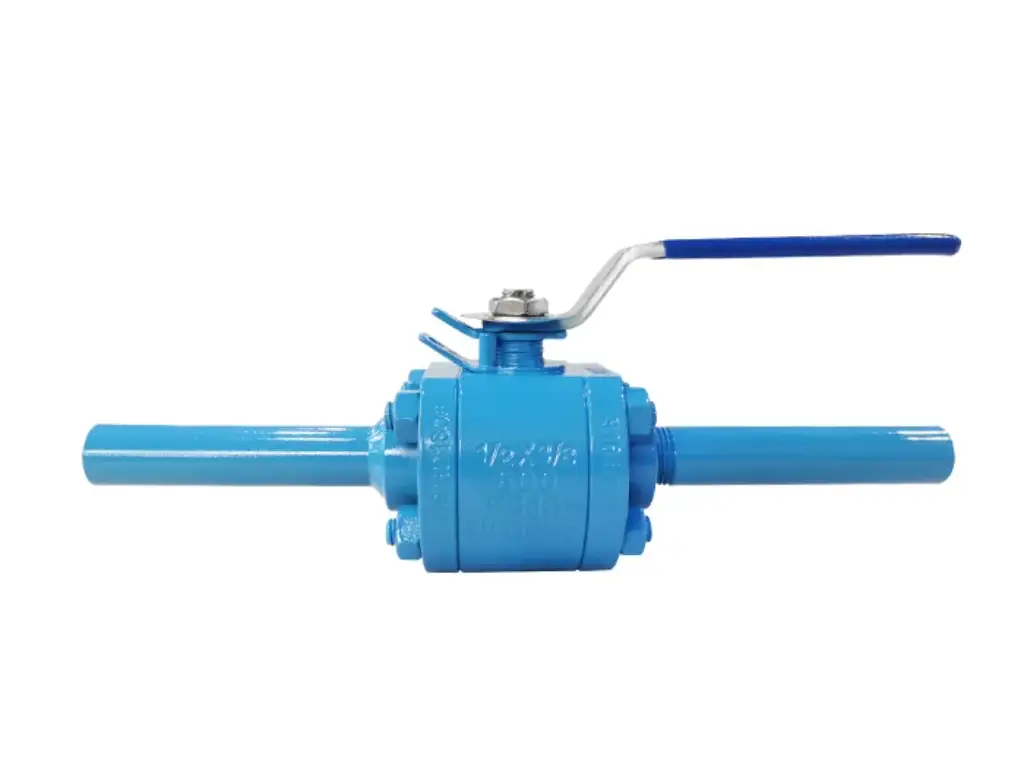
The floating ball valve is one of the most common types of valves. It has a floating ball that seats against two seats inside the body of the valve. When open, fluid flows through an annulus between the seats and ball. They are minimized in terms of pressure drop across them due to their reduced bore design, so they can be used in cases where fluid flow efficiency is important, such as oil and gas pipelines. They have solid balls which ensure tight seals against valve seats thereby preventing valve failures even at high pressures.
Trunnion Ball Valves
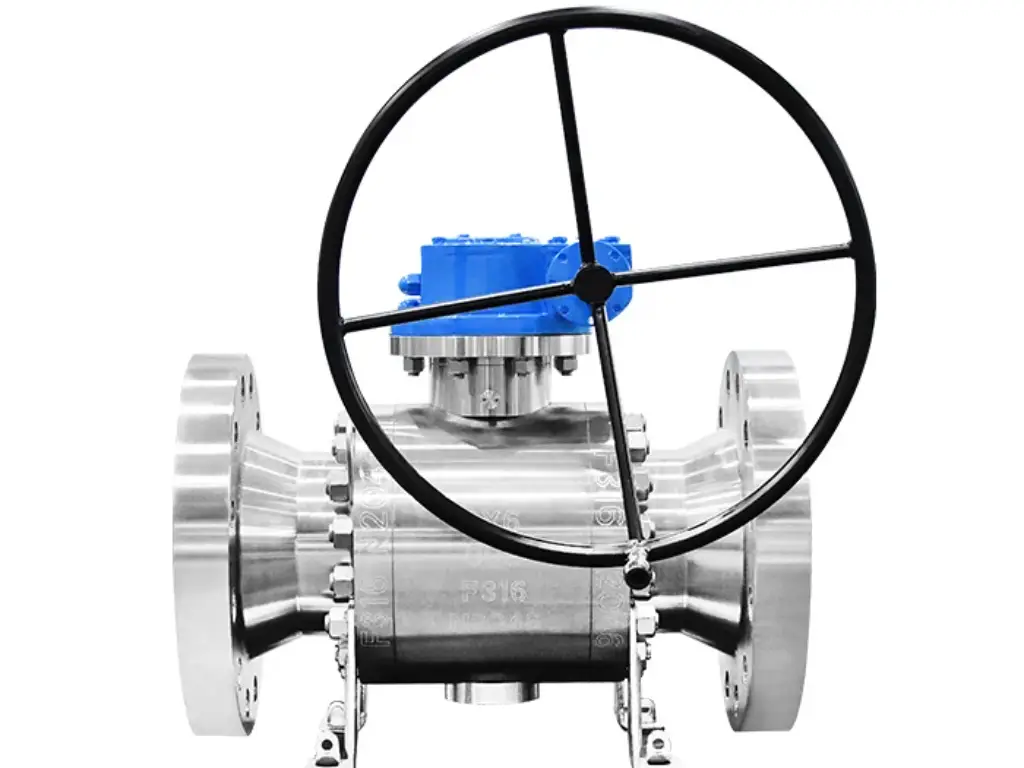
For trunnion ball valves, their fixed lower stem allows them to rotate smoothly within its body. This minimizes pressure drop as well as friction during operations, hence making them effective for high pressure environments like natural gas transmission. Trunnion ball valves have a larger bore diameter, therefore offering large flow rates, thus ensuring efficient fluid controls in flanged pipeline systems using various materials and sizes.
Three-Way Ball Valves
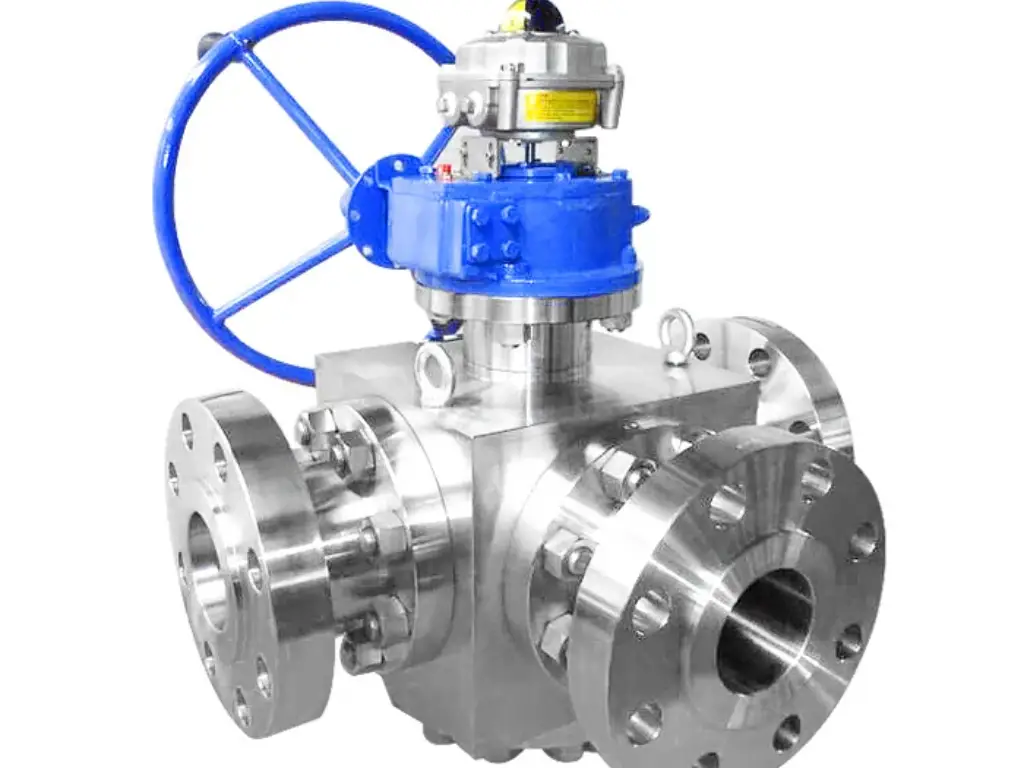
The three-way ball valves are made of a ball which is either T-shaped or L-shaped that has multiple ports, thus enabling the flow to be controlled between different directions and also allowing flows from different sources to be mixed up. This kind of valve is widely applied in chemical processing since it needs precise control over the direction of flow and mixing for production processes optimization. The fact that they have hydraulic actuation and can also be operated using electric actuators makes them fit well within automated control systems.
Vented Ball Valves
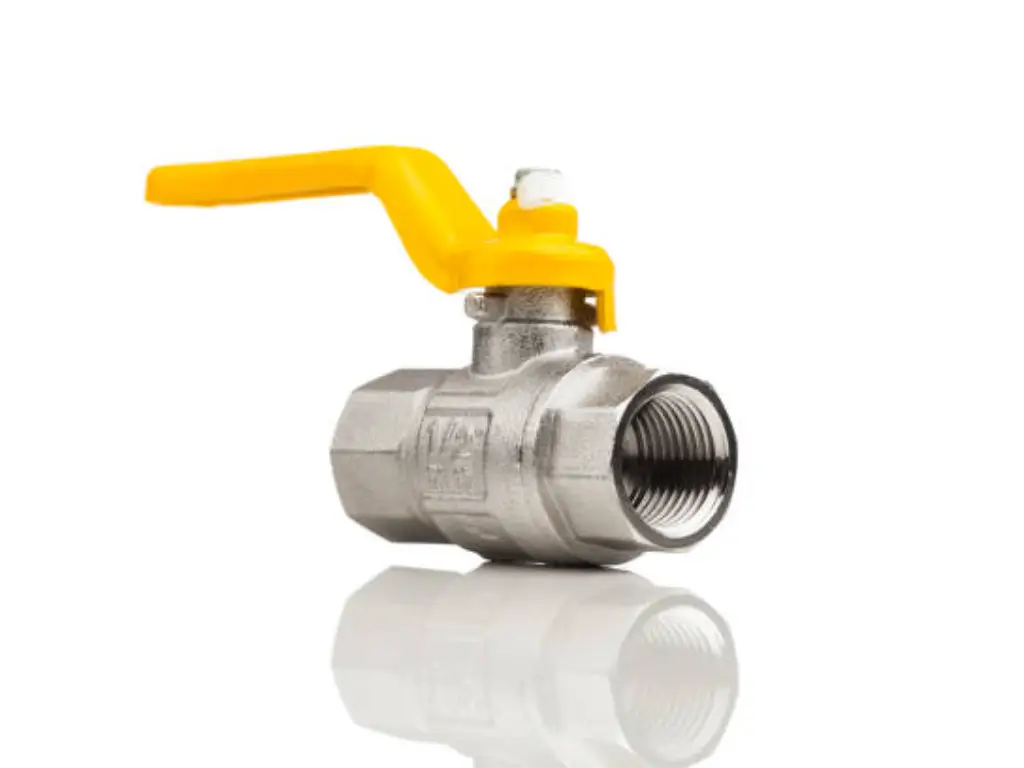
Vented ball valves have an added vent or relief port which prevents over pressurization in systems that handle volatile fluids or gases. This construction design allows trapped particles and extra pressure to escape safely when the system is not in use for long times or during changes of temperature, thus preventing damages on various equipment. The operators can release media from trap through manual control mechanisms outside the valve, making them ideal for chemically processing sectors and food processing where system integrity matters most.
Materials Used in Ball Valve Construction
Ball valves are made from differing materials, each chosen according to its peculiar characteristics and suitability for a range of operating conditions.
- Stainless Steel: Owing to its tremendous resistance to corrosion, toughness and tensile strength, stainless steel is preferred material in the construction of ball valves. It is used widely due to its ability to resist harsh chemicals particularly in water supply systems and chemical processing plants. Stainless steel ball valves can work under temperatures from -425°F up to 1200°F (-254°C up to 649°C) making them suitable for diverse industrial environment use.
- Brass: The advantage of brass ball valves lies in their affordable price and ease with which they can be machined. They have good corrosion resistance properties. Therefore, they are commonly applied in plumbing and gas distribution systems. They are capable of operating at 250°F (121°C), especially when low cost and dependability matter as exemplified through residential- commercial applications.
- PVC: These valves are lightweight, inexpensive, corrosion proof, and therefore widely used in water treatment plants and irrigation systems for having a good resistance against numerous chemicals and different temperatures. For instance, PVC valves offer excellent flow characteristics with the ability to withstand 140°F (60°C) temperatures. Also, they do not conduct electricity which is an added advantage in certain applications.
- Carbon Steel: Strength and durability characterize carbon steel ball valves among other types made from this material. They are usually employed in high-pressure oil pipelines as well as gas pipelines as well as the refining process where there is high temperature and pressure involved. Pressure ratings exceeding 5000 psi (345 bar) enable carbon steel valves to function at temperatures ranging from -20°F to 1000°F (-29°C to 538°C). Hence, enabling proper functioning under these harsh environmental conditions.
Here’s a concise table summarizing the materials used in ball valve construction:
| Material | Characteristics | Applications | Temperature Range | Pressure Rating |
| Stainless Steel | Excellent corrosion resistance, durable | Water supply, chemical processing | -425°F to 1200°F | High pressure |
| Brass | Affordable, good corrosion resistance | Plumbing, gas distribution | Up to 250°F (121°C) | Moderate |
| PVC (Polyvinyl Chloride) | Lightweight, corrosion-resistant, economical | Water treatment, irrigation | Up to 140°F (60°C) | Low to moderate |
| Carbon Steel | Strong, durable, suitable for high pressures | Oil and gas pipelines, refining | -20°F to 1000°F | >5000 psi (345 bar) |
It should be noted that each material has its advantages depending on the requirements of the application. These includes temperature resistance, pressure, chemical compatibility as well as costs among others. This way engineers can provide reliable fluid control solutions using ball valve products across many industries by selecting suitable materials for each case’s special requirements.
Advantages and Disadvantages of Using Ball Valves
Ball valves present a few benefits as well as drawbacks which rely on the context in which these are used and how they operate.
Advantages:
- Excellent Shutoff Capability: They are ideal for applications requiring tight seals when closed, leaking prevention and reliable shutoffs such as oil and gas pipelines and chemical plants.
- Quick Operation: Ball valves can be opened or shut using a quarter-turn operation (90 degrees) that facilitates faster response times hence suitable for emergency shutdown systems.
- Application Versatility: These ball valves have versatile applications as they work with many fluids, including corrosive liquids, abrasive media, due to their choice of materials and configurations.
- Minimal Maintenance: Ball valves require minimal maintenance compared to other types because they have fewer moving parts and do not wear out easily.
While ball valves offer some advantages, it’s important to consider their drawbacks as well.
Disadvantages:
- Flow Control Limitations
- Potential for Cavitation
- Cost Considerations
- Limited Turndown Ratio
Selecting the Right Ball Valve for Your Needs: Key Considerations
The choice of a right valve necessitates the consideration of a number of factors. The type of media, pressure, temperature requirements and application specifics are paramount. A stainless steel ball valve would be ideal if you are dealing with high pressure systems because it is tough and resistant to corrosion.
The size and design of the valve also counts. Full bore valves are most suitable for applications requiring maximum flow whereas reduced bore valves are good in such systems that need restricted flows. Taking into account these aspects will enable you choose a valve that meets your specific requirements and guarantees reliable performance.
Conclusion
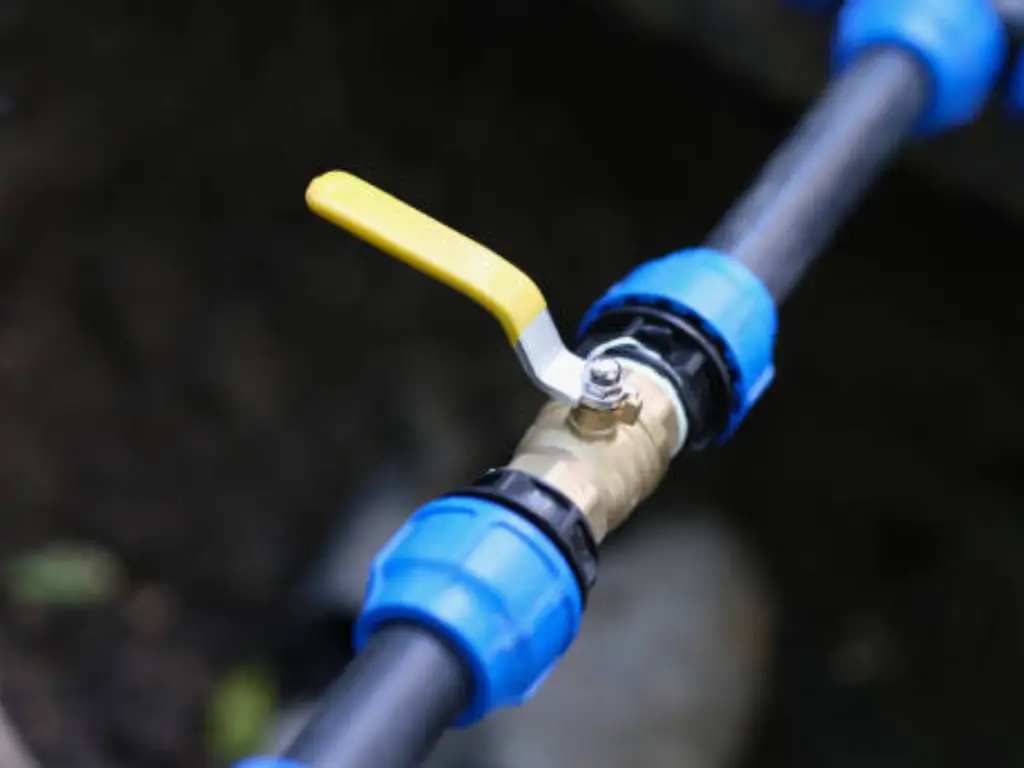
To sum up, it is necessary for anyone involved in fluid control systems to know what a ball valve is used for and its varied applications. Ball valves are versatile, dependable, and have a tight seal which makes them suitable for application in different areas. The use of ball valves is common ranging from domestic plumbing works to industrial operations, where they continue to gain increased popularity because they have several benefits. Given the specific demands of your project, you can decide on the most appropriate ball valve that will help you efficiently and effectively control flow of fluid.









